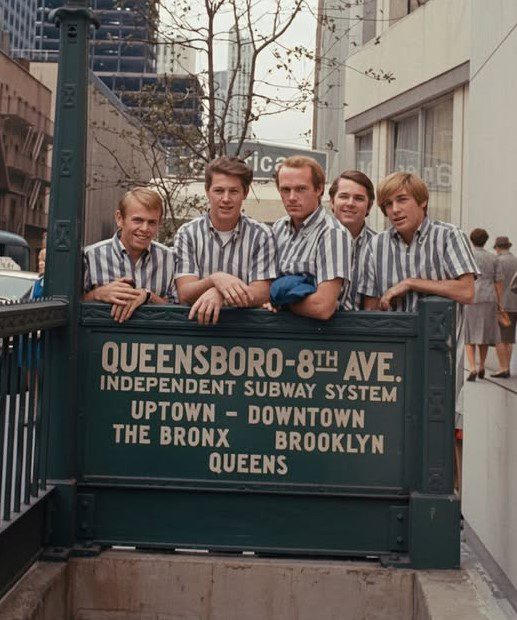
Introduction to a Timeless Classic
“Wouldn’t It Be Nice” by The Beach Boys stands as one of the most iconic tracks in the history of 1960s pop music. Released in 1966 as the opening track of the legendary album Pet Sounds, the song immediately distinguished itself from the band’s earlier surf rock anthems, showcasing a matured musical vision and an intricate production style. Written by Brian Wilson, Tony Asher, and Mike Love, the song encapsulates youthful longing, the innocence of first love, and the aspirational desire for a future filled with companionship and stability. Its timeless appeal resonates across generations, making it not only a staple in classic rock playlists but also a cultural artifact reflecting the evolving soundscape of the 1960s.
Musical Composition and Production Mastery
The musical structure of “Wouldn’t It Be Nice” represents a profound leap in pop orchestration and studio innovation. Brian Wilson, the band’s visionary composer, utilized an array of unconventional instruments for a pop song of the era, including accordions, harpsichords, timpani, banjos, and multiple layers of guitars, creating a richly textured auditory experience. The meticulous arrangement relied heavily on the legendary Wrecking Crew, a group of Los Angeles session musicians renowned for their precision and creativity. Every instrument was carefully orchestrated to support the complex vocal harmonies that became the hallmark of The Beach Boys’ sound. The combination of lush orchestration, layered percussion, and intricate harmonies contributed to a sound that was simultaneously sophisticated and accessible, bridging the gap between pop sensibilities and orchestral elegance.
Vocal Harmonies and Lead Performances
At the heart of the song’s enduring charm are the vocal harmonies that define The Beach Boys’ signature style. Brian Wilson’s falsetto carries the song’s primary melodic line, delivering a sense of vulnerability and youthful anticipation. Complementing him, Carl Wilson’s lead vocals inject warmth and sincerity, while the harmonies of Mike Love, Al Jardine, and Dennis Wilson enrich the texture, creating a multi-layered soundscape that resonates with emotional depth. The interplay between these voices mirrors the lyrical themes of hope, desire, and the excitement of imagined futures, making the song emotionally relatable even decades after its release.
Lyrics: Themes of Love and Longing
The lyrics of “Wouldn’t It Be Nice” explore the universal yearning for early adulthood freedom and the desire for companionship that transcends societal restrictions. Written by Tony Asher with contributions from Mike Love, the words capture a delicate balance between innocent optimism and the nuanced reality of growing up. The opening lines immediately evoke a sense of wistfulness, imagining the freedom to love openly without limitations. The bridge, contributed by Mike Love, introduces a conversational tone that contrasts with the lofty aspirations expressed in the verses, providing a humanizing and relatable dimension to the song. The lyrical content, while rooted in personal experiences, achieves a timeless universality that allows listeners across different generations to connect with its emotional core.
Historical and Cultural Impact
Upon release, “Wouldn’t It Be Nice” marked a significant turning point for The Beach Boys, challenging both the band’s image as surf rock icons and the expectations of Capitol Records. Despite initial skepticism from industry executives, the song achieved commercial success, reaching #8 on the Billboard Hot 100, and has since become a defining piece of the band’s repertoire. Its influence extends beyond chart performance, shaping the trajectory of pop music production, inspiring countless artists to experiment with intricate arrangements and emotionally charged lyrics. The song has appeared in numerous films, television shows, and commercials, including notable appearances in Shampoo (1975) and 50 First Dates (2004), cementing its status as a cultural touchstone.
Brian Wilson’s Vision and Innovation
Brian Wilson’s creative approach to “Wouldn’t It Be Nice” exemplifies his commitment to musical innovation. Rejecting the limitations of conventional pop, Wilson sought to merge classical music sophistication with accessible pop melodies, resulting in a mini-symphony that captures both hopeful exuberance and emotional introspection. His painstaking attention to detail in both instrumentation and vocal arrangements reflected a desire to transcend the band’s earlier surf-oriented sound, creating music that was intellectually stimulating while remaining emotionally compelling. This ambition solidified Wilson’s reputation as one of the most innovative and influential composers of the 20th century.
Enduring Legacy and Modern Relevance
Decades after its initial release, “Wouldn’t It Be Nice” continues to resonate with listeners worldwide. Its combination of sophisticated musicality, poignant lyrics, and immaculate vocal harmonies ensures its ongoing relevance. Modern artists frequently cite the song as a source of inspiration, particularly for its intricate production techniques and its seamless blending of pop and orchestral elements. Additionally, the song’s optimistic vision of love and partnership remains emotionally potent, allowing it to maintain a timeless appeal in an ever-evolving musical landscape.
Conclusion: A Song That Transcends Time
“Wouldn’t It Be Nice” by The Beach Boys is more than a song; it is an enduring musical statement that captures the essence of youthful longing, sophisticated artistry, and cultural significance. From its meticulously crafted instrumentation to its emotionally resonant vocal harmonies and timeless lyrics, the track embodies the pinnacle of Brian Wilson’s creative genius. Its influence on subsequent generations of musicians and its continued presence in popular culture confirm its status as a classic hit that transcends time, genre, and generational boundaries. By combining innovative production, relatable themes, and unforgettable melodies, “Wouldn’t It Be Nice” remains an essential entry in the canon of classic American pop music, a song whose beauty and craftsmanship continue to inspire and captivate audiences around the world.